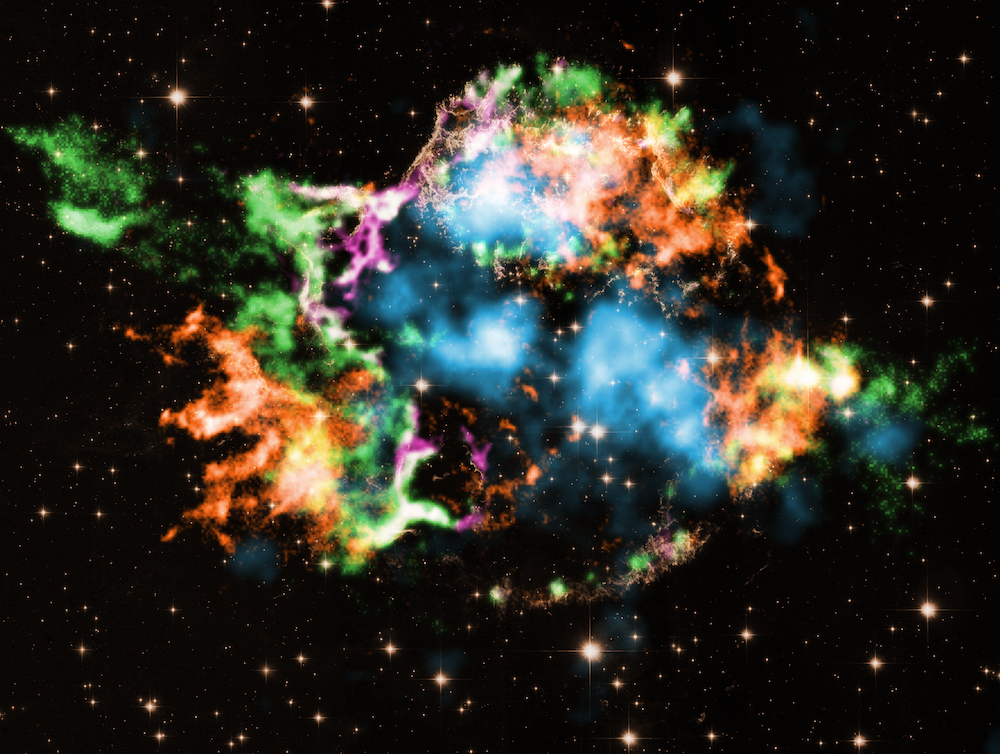
When stars go supernova, do they all produce the same heavy elements? How do the percentages compare for these elements in each star?
Dale Miller
Springfield, Ohio
Isn’t it amazing that the heavy elements we see here on Earth were created by stars going supernova? The short answer to your question is that different kinds of supernovae are caused by different kinds of stars. Depending on their mass and type, these stars disperse different elements into the universe.
To look a bit deeper into the answer, let’s examine the different types of supernovae. Broadly, there are two: those with relatively little hydrogen in their explosions (type I), and those with a lot of hydrogen (type II). Of the type I supernovae, there are three sub-types: Ia, Ib, and Ic.
Type Ia supernovae are caused by the thermal runaway process. This happens when a star with roughly the mass of the Sun dies and leaves behind a white dwarf star rich in carbon and oxygen. If it is in a binary system, the white dwarf will start stealing gas and dust from its companion and heat up. Eventually, the white dwarf will heat up so much that carbon fusion is ignited, and it goes supernova. Type Ia supernovae populate the surrounding environment with lots of carbon, as well as silicon, nickel, and elements up to iron.
Types Ib and Ic and type II supernovae are caused by the core-collapse process that happens when stars with masses greater than eight times the mass of the Sun end their lives. Generally, very massive stars (around 30 times that of the Sun) create the hydrogen-poor type Ib/Ic supernovae, while stars between eight and 30 times the mass of the Sun create the hydrogen-rich type II supernovae.
While core-collapse supernovae also populate the surrounding environment with elements up to iron, they generally do so in much lower quantities compared with type Ia supernovae. Instead, they primarily eject elements heavier than zinc and are one of the main sources in the universe for creating these elements.
Kathryn Neugent
NASA Hubble Postdoctoral Fellow, Harvard University, Cambridge, Massachusetts








